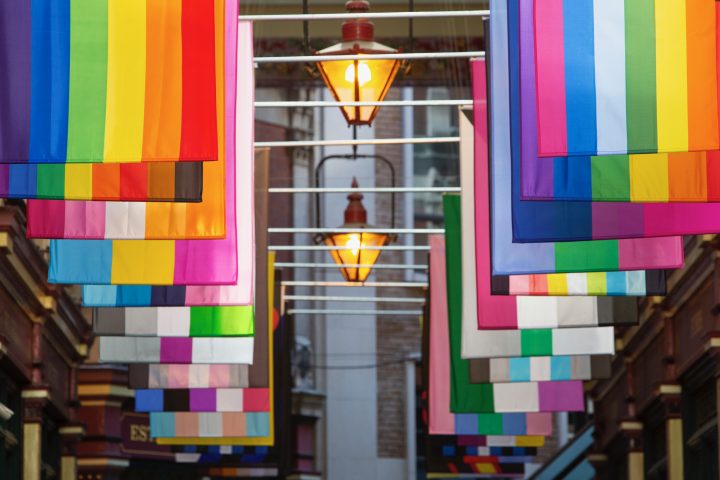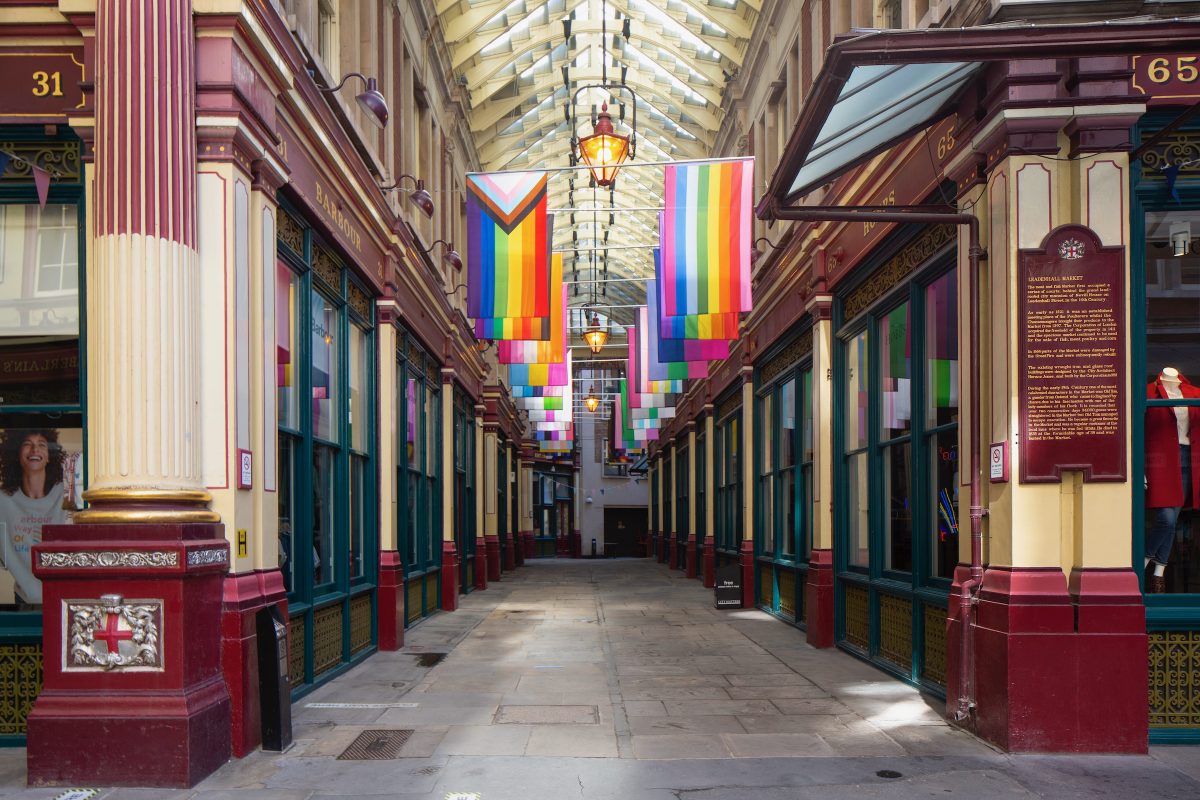
Who owns the rainbow? What value does the rainbow have in the gay community today? Does the Pride flag have any relevance anymore?
These are questions that filter through my thoughts daily. Certainly, the rainbow is still perhaps the most commonly and widely known symbol for the LGBTQIA+ community. And, yet, it has gone through a cultural tug of war over the years since it was first developed in San Francisco, in 1978, by Gilbert Baker, Lynn Segerblom, and James McNamara.
Since that time, the Pride flag has become the basic model for numerous flags representing the spectrum of identifications via gender, sexuality, and fetish. Some might say it has been overproduced and lost its meaning even within the gay community. A new and somewhat controversial version appeared in Philadelphia in 2017 with black and brown stripes to represent people of color, then an updated Progress Pride flag by Daniel Quasar in 2018 included these stripes, plus the colors of the Trans Pride flag, and now there is a third version, made by Valentino Vecchietti in June 2021, riffing on Quasar’s version with the addition of the Intersex Pride flag designed by Morgan Carpenter in 2013. It seems like the Pride flag changes just as quickly as the latest smartphone. Does that make the original Pride flag outdated?
In recent art history, the rainbow has appeared frequently in the contemporary art of Rob Pruitt, Jonathan Horowitz, Ugo Rondinone, Polly Apfelbaum, David McDiarmid, among other artists, as a symbol for the LGBTQIA+ community. It readily appears as a queer symbol even when it is not in its original format and functions as a stand-in for all these original core values, as well as the continued pursuit of human rights and equality, in terms of issues such as the decriminalization of homosexuality, the age of consent, and the right to get married and adopt children. The rainbow also relates to gender identity, discrimination based on this identity, and the general stigma around homosexuality that regards it as something taboo and debased.
However, in the midst of the pandemic, the rainbow suddenly became a symbol for the NHS in the United Kingdom and the association it once had with the gay community quickly dissipated. One friend suggested that the difference was that the rainbows supporting the NHS were handmade but the rainbows for the gay community were mechanical. This is clearly not the case, as we saw with Peter Blake’s iconic pop design. The rainbow enamel pins that had been used by doctors and nurses to suggest alliance with the gay community were now just an inane form of self-promotion. In July 2021, in an Instagram story the artist, Gray Wielebinski, mused “Still thinking about how fucking bizarre it was when they tried to rebrand supporting the NHS/essential workers with the rainbow flag here last summer for no reason except so homophobic/transphobic people could put rainbows up without shame anymore.”

It gets more complicated. While LGBTQIA+ people may feel the rainbow was hijacked by the NHS, there is simultaneously a parallel international campaign to “reclaim the rainbow” by some Christians who vehemently believe the rainbow is a symbol of God and was stolen from them!
We cannot forget that President Donald Trump banned the Pride flag from being flown on official embassy flagpoles in 2019 and it is still currently banned by the Pentagon on United States military installations. Notwithstanding President Biden overturning this former order at US embassies in 2021, there is the “Old Glory Only Act” currently proposed by Congressman Jeff Duncan to ensure “that no United States diplomatic or consular post flies any flag other than the United States flag over such post.”
At a community level, there are Gay Pride flag burnings increasingly happening across America in cities at nightclubs such as Alibi Lounge, one of New York City’s only Black-owned gay bars, where two incidents occurred within a month of each other in 2019. Flag burnings have also happened at people’s homes in small towns in the United States. In 2020, in Webster, South Dakota, Troy Kreich’s flag was allegedly stolen and burned by Darrin Pesall on a Facebook live video. And this act even occurs among some churches and community centers which hang the Gay Pride flag in solidarity with the gay community. There is a dark undercurrent of homophobia perceptible in similar acts of hatred played out on video games such as Minecraft shared anonymously on YouTube as play-by-play videos. In some communities, this violent act is considered a hate crime and the consequences can be severe, such as in the case of Adolfo Martinez, who was sentenced to 17 years in prison after burning a Gay Pride flag at Ames United Church of Christ in Ames, Iowa in 2019.
At a time when the presence of these flags can be so polarizing and charged, I felt hopeful to still see Pride flags being raised, especially at ceremonies during Pride Month in small communities across America such as Peabody, Massachusetts. In Peabody, Harvey Milk, who commissioned the original Pride flag by Baker, and the recently diseased playwright and activist Larry Kramer, were recognized in a brave speech by local activist, Gigi Gill, proceeded by three children proudly taking turns raising that flag for all to see.
It seems that even today, hanging such a simple flag, which represents all these complex issues, is not so simple or straightforward, after all. In essence, it’s not about whether or not the rainbow is gay but simply that gay people have a right to exist. That is why the Pride flag still matters today.
0 Commentaires